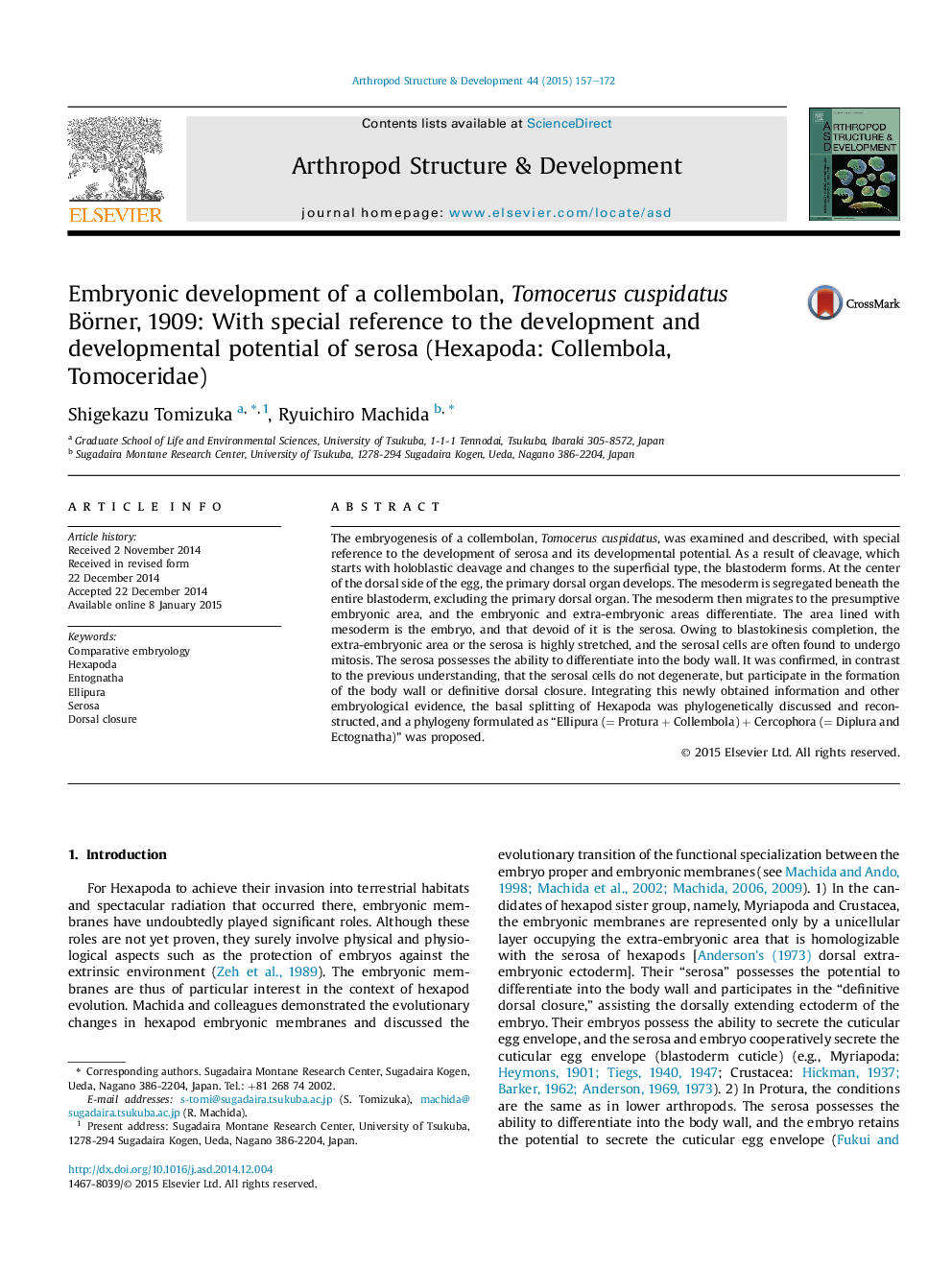| کد مقاله | کد نشریه | سال انتشار | مقاله انگلیسی | نسخه تمام متن |
|---|---|---|---|---|
| 2778630 | 1153152 | 2015 | 16 صفحه PDF | دانلود رایگان |

• Embryogenesis of a springtail sp. was examined, focusing on development of serosa.
• Collembolan serosa was revealed to retain ability to differentiate into body element.
• In light of comparative embryology the basal splitting of Hexapoda was reconstructed.
• Ellipura and Cercophora are strongly supported, while Entognatha is dismissed.
The embryogenesis of a collembolan, Tomocerus cuspidatus, was examined and described, with special reference to the development of serosa and its developmental potential. As a result of cleavage, which starts with holoblastic cleavage and changes to the superficial type, the blastoderm forms. At the center of the dorsal side of the egg, the primary dorsal organ develops. The mesoderm is segregated beneath the entire blastoderm, excluding the primary dorsal organ. The mesoderm then migrates to the presumptive embryonic area, and the embryonic and extra-embryonic areas differentiate. The area lined with mesoderm is the embryo, and that devoid of it is the serosa. Owing to blastokinesis completion, the extra-embryonic area or the serosa is highly stretched, and the serosal cells are often found to undergo mitosis. The serosa possesses the ability to differentiate into the body wall. It was confirmed, in contrast to the previous understanding, that the serosal cells do not degenerate, but participate in the formation of the body wall or definitive dorsal closure. Integrating this newly obtained information and other embryological evidence, the basal splitting of Hexapoda was phylogenetically discussed and reconstructed, and a phylogeny formulated as “Ellipura (= Protura + Collembola) + Cercophora (= Diplura and Ectognatha)” was proposed.
Journal: Arthropod Structure & Development - Volume 44, Issue 2, March 2015, Pages 157–172